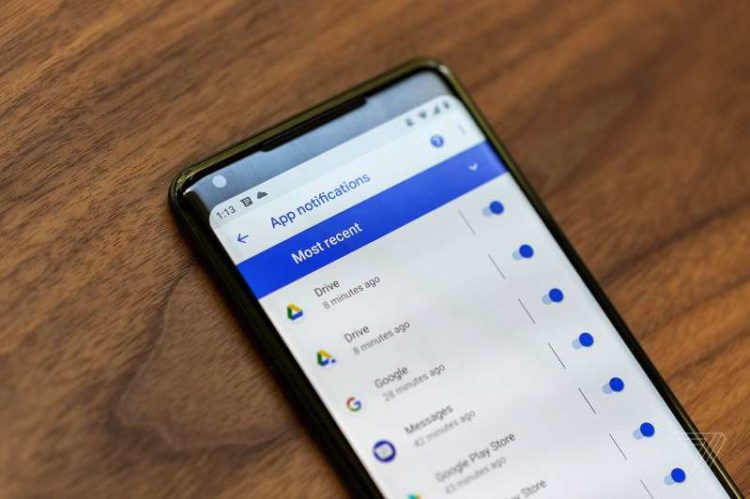The much-anticipated Google’s mobile software update – “Google Android 9 pie” is here. Google officially released Android 9 Pie, the latest big update of the company’s mobile operating system.
Google’s mobile software update for 2018 is Android 9 Pie, or ‘P’. And it’s out for Google’s own Pixel phones. The latest version of its mobile OS has plenty of exciting new features and updates to play with.
These new features include; gesture navigation, more AI smarts, and helpful accessibility menu tools to help you better understand your smartphone usage. There are other great stuff in the newest Android like tweaked look, altered volume controls and a new battery mode.
Let’s quickly highlight some major features that Google built inside Android 9.0 Pie.
Pair up to 5 Bluetooth Devices
Unlike Android O version that supported two Bluetooth audio connections at once, Android 9 Pie enables user to pair up to five Bluetooth devices and switch between these devices seamlessly. If a phone call comes in, Google says that Android P will route it to any Bluetooth speaker or paired audio accessory that’s capable of handling calls.
Auto Rotation Button Pops-up when Needed

In Android 9 Pie, whenever an app is open that supports landscape and you turn your phone that way, you’ll see a new rotation lock icon pop up in the navigation bar to the far right. Tap it, and the app will rotate. This does not change the overall system setting. Just know that you are actually locking the app to landscape when you tap that icon. To switch back, just rotate your phone to portrait and tap it again.
Gesture Navigation
Gesture-based controls for phones without home buttons. You are now able to swipe to switch between apps and access Google Assistant, similar to the functions offered on Apple’s buttonless iPhone X.
Pie Suggests Turning off Notifications that you Frequently Dismiss
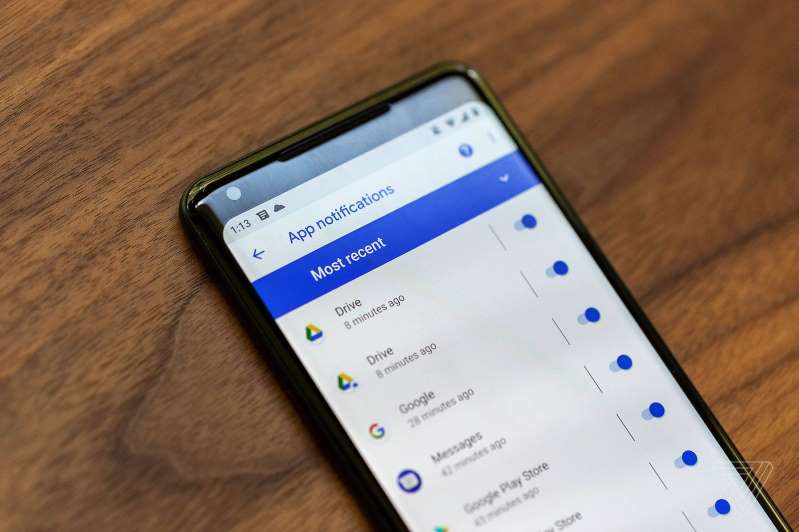
If Android 9.0 notices that you routinely swipe away an app’s notifications without ever tapping into them, the system will show a prompt asking if you’d prefer to just shut off notifications for that particular app instead of swiping over and over again.
Tweaked Look
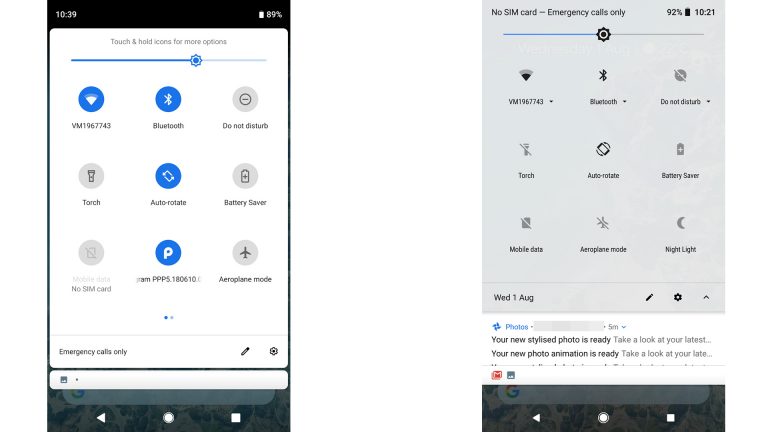
Android 9 Pie offers more colour. Feature switches in the dropdown control centre are blue circles rather than plain text icons.
Advanced Accessibility Menu
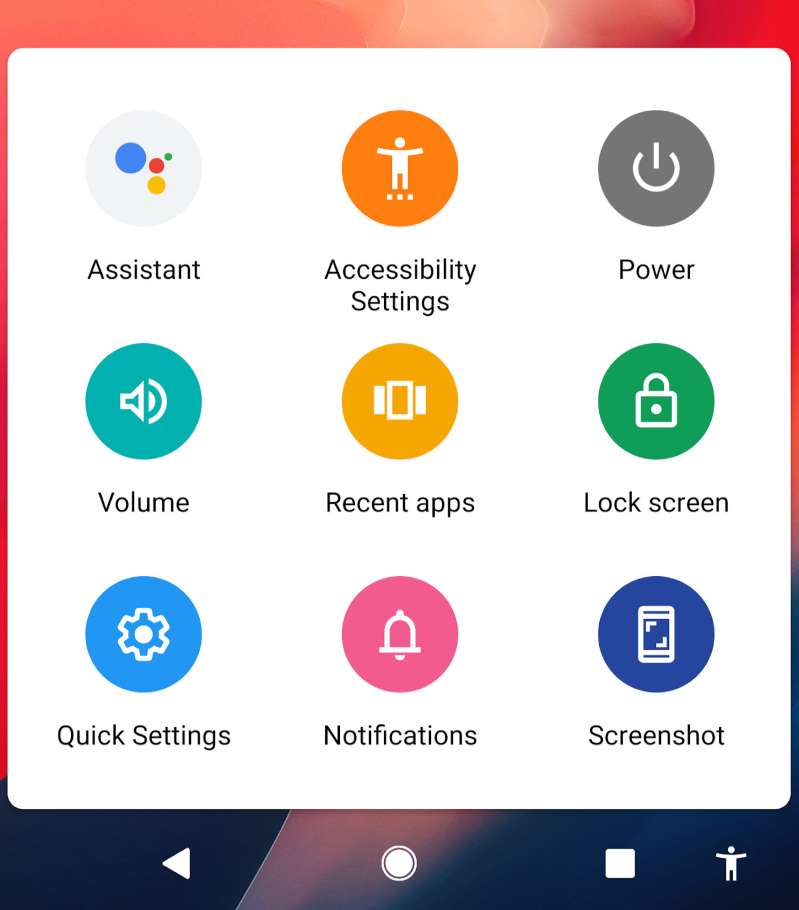
Google has added a new Accessibility Menu to Pie that when enabled, it gets its own icon in the bottom navigation bar. The Accessibility Menu provides easier-to-reach shortcuts (and larger tap targets) for performing common functions like triggering Google Assistant, opening the app switcher, pulling down the quick settings/notification shade, taking screenshots, and more.
Lockdown Mode Temporarily Shuts Off Fingerprint Authentication
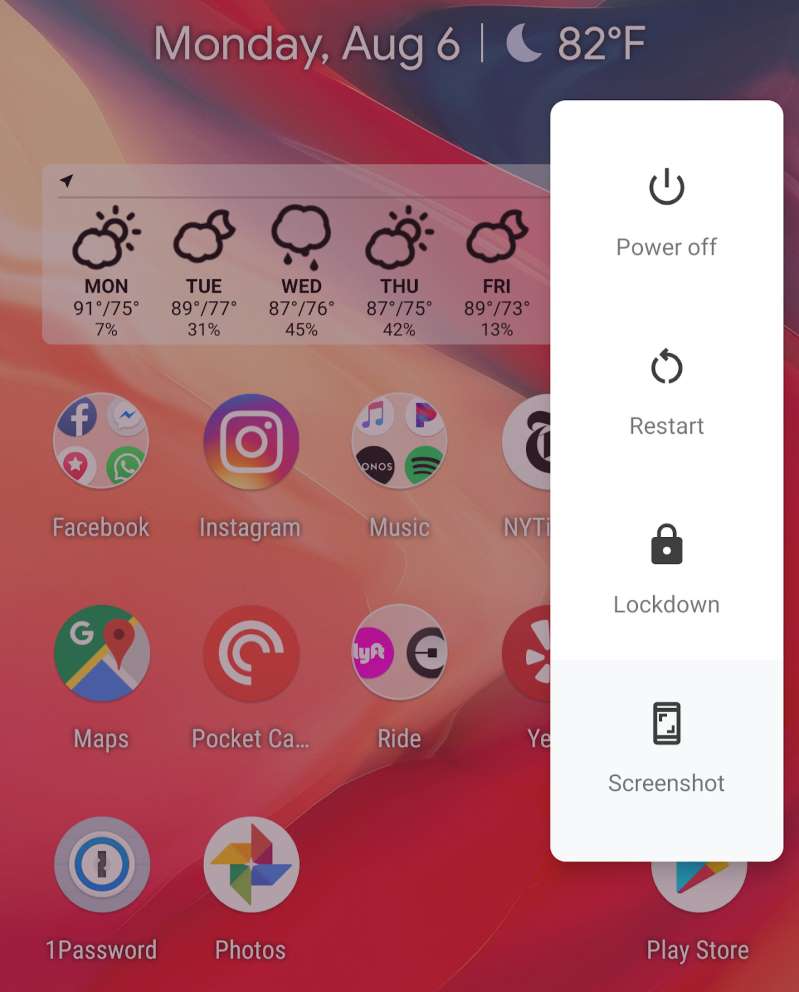
Lockdown will exit out to the lock screen, hide all of your current notifications, and require your password or pattern to unlock the device. Even if it’s really you, other authentication methods — facial recognition, fingerprints, and so on — won’t be enough to bypass the lock screen. To enable it, go to Settings —> Security & location —> Lock screen preferences. Toggle “Show lockdown option” to the on (blue) position.
Digital wellness tools
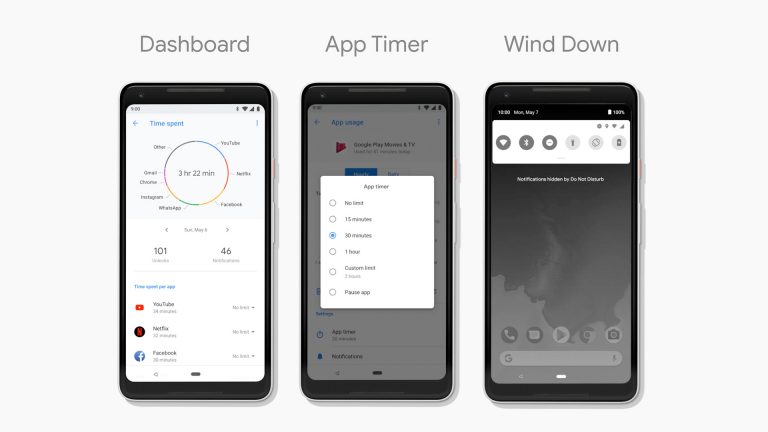
To show users how much time they spend on different apps and which ones are responsible for your notifications. Pie’s got a whole bunch of “digital wellbeing” features that are designed to help you better understand how you’re using your phone so that maybe you can stop using it so much. It lets you take control of your usage by putting a variety of usage limits in place, or by enabling a wind-down function that gradually turns your screen to black and white, whilst enabling do-not-disturb, to help you sleep more easily
Gesture-based controls for handsets without home buttons. You are now able to swipe to switch between apps and access Google Assistant, similar to the functions offered on Apple’s buttonless iPhone X.
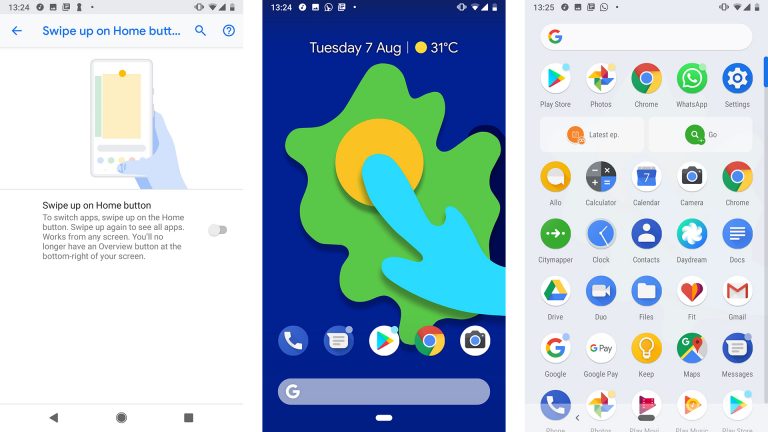
AI adaptivity which covers things like battery usage, brightness, and changes to the home screen based on your activities and the time of day. Whether you literally see it or not, Google’s sprinkled another healthy dose of AI throughout Pie.
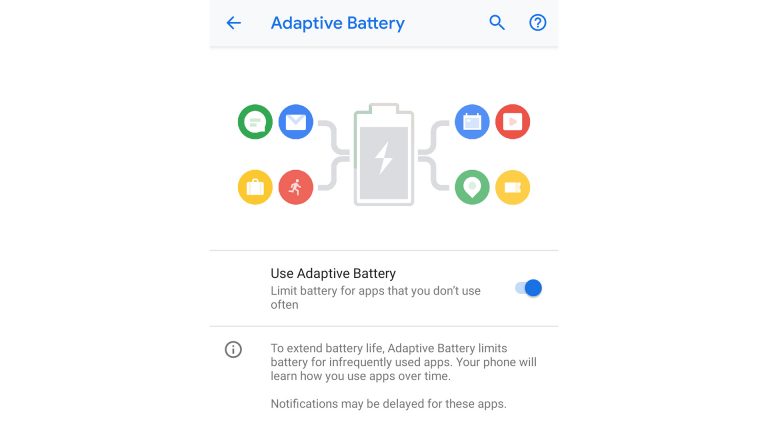
First, there’s the Adaptive Brightness setting. Besides adjusting the screen’s brightness based on your environment, Android is now able to learn your preferences based on your own adjustments. So for example, if you lower the brightness right before bed every night at 10 p.m. Pie will automatically make this adjustment for you. It’s pretty nifty.
Similarly, there’s an Adaptive Battery feature that’s supposed to learn which apps you use the most and prioritize them in order to conserve power.
Which Devices Can Download Android Pie?
You can already get Android Pie if you have one of Google’s own Pixel phones, or the Essential PH-1. A leaked update roadmap for Samsung’s devices shows that it will still be working to add the previous version, Oreo onto existing mid and low-end models until March 2019, indicating that users of models such as the Galaxy J7, On5 and On7, C7 and Tab A might be lagging behind for some time. Alos, HTC phones which runs on Android One will have a Pie enabled model by the general autumn deadline. Hopefully this means that other models like the U12+, U11+ will get updated shortly afterwards.
So far, Pie seems like a solid update. There are a couple of tweaks that we’re sure will take users some time to catch up on, but we like what Google’s offering in its latest Android release.
We hope you found this article useful.
More Tech Reviews:
- iPhone X Vs Samsung S9, Which One Would you Rather Go for? See Detailed Review Here
- How to market your business like Yoco: An interview with Marketing manager Nicholas Soper
- The Need for Vertical Farming in Africa
- Could This Be The World’s First Holographic Phone?
- Madagascar, Kenya, South Africa and Others Make Broadband Speeds in Africa

